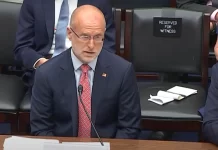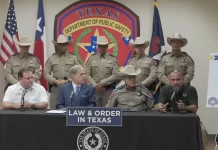The 2022 Supreme Court term has ended and it has been the most consequential term in decades. Let me list the highlights:
West Virginia v Environmental Protection Agency
This case was decided by a 6-3 vote. Justice Roberts wrote the majority opinion and it was joined by Justices Thomas, Alito, Gorsuch, Kavanaugh and Barrett. Justice. At issue was the Clean Power Plan adopted by the EPA in 2015, which limited greenhouse gas emissions from power plants. The opinion held that the EPA had exceeded the authority that it had under the Clean Air Act because there was no clear and specific authorization to establish a national plan to regulate greenhouse gas emissions.
At the heart of the case was the power of administrative agencies to issues regulations under statutes when those statutes are ambiguous or intentionally open ended. In 1984, the Court established the “judicial deference rule” in the case of Chevron USA, Inc. v Natural Resources Defense Council, Inc., which held that the courts should defer to the interpretation of a statute by the relevant regulatory agency if the interpretation was not unreasonable.
Effectively this enabled what has become known as the administrative state which allowed the President and Congress to avoid adopting statutes when there was insufficient support for passage of such statutes, instead relying on administrative agencies to reach their desired result through regulation. In subsequent cases, the Court adopted the “major questions doctrine”, which holds that on issues having “great economic or political significance”, the administrative agency adopting the regulation must be acting pursuant to a clear delegation of authority by Congress.
In a concurring opinion by Justice Alito, joined by Justice Thomas, he wrote that the “Constitution does not authorize agencies to use pen-and phone regulations as substitutes for laws passed by the people’s representatives”—a clear swipe at former President Obama.
In Justice Kagan’s dissent, she demonstrates how much the administrative state is valued by the Left, saying: “The Court appoints itself—instead of Congress or the expert agency—the decision maker of climate policy. I cannot think of many things more frightening”.
Dobbs v Jackson Women’s Health Organization
This case dealt with a Mississippi law which banned abortion after the 15th week of pregnancy, with the exception of a pregnancy that threated the life of the mother or created a medical emergency. Aside from seeking a ruling affirming the constitutionality of the law, Mississippi asked the Court to reconsider its prior opinions in of Roe v Wade, decided in 1973, which established (or created) a constitutional right to terminate a pregnancy, and Planned Parenthood v Casey, decided in 1992, which held that prior to the point of fetal viability, i.e., when the developing child could survive outside the womb, no State or municipality could create an “undue burden” on women who want to have an abortion.
By a 5-4 vote, the Court in an opinion written by Justice Alito and joined by Justices Thomas, Gorsuch, Kavanaugh and Barrett, overruled Roe and Casey, holding that that there is no right to abort or terminate a pregnancy under the Constitution because abortion is not mentioned in the Constitution and under the 14th Amendment, which said that “liberty” could not be restricted without “due process of law”, abortion is not a protected liberty because it was not “deeply rooted in this nation’s history and tradition”, either at the time the Constitution was adopted or when the 14th Amendment was adopted in 1867, and is not “implicit in the concept of ordered liberty”.
Justice Roberts concurred in part, agreeing that the Mississippi statute was constitutional because there was no basis for setting fetal viability as the line separating whether a statute regulating abortion was constitutional or not, but he did not join in overruling Roe and Casey, saying there was no need to reach the question of the core holding of Roe that there was a constitutional right to terminate a pregnancy. This is, of course, the middle ground or incrementalist approach to consideration of past precedent that Justice Roberts has long urged and which the five Justices voting to overrule Roe and Casey have clearly rejected. The rejection of the incrementalist approach is significant and indicates that Justice Roberts no longer controls the Court.
In a concurring opinion by Justice Thomas, he indicated that he rejected the doctrine of substantive due process by which the Court recognized (or created) rights not mentioned in the Constitution, and he said the Court should reconsider prior cases, such as Griswold v Connecticut, which recognized (or created) a right to contraception; Lawrence v Texas, which recognized (or created) a right to same sex intimate acts and relationships; and Obergefell v Hodges, which recognized (or created) a right of same sex couples to marry. No other Justice joined the Thomas concurrence and Justice Alito, in the majority opinion, took pains to say that the opinion in Dobbs should not be understood to affect any opinions not dealing with the subject of abortion.
New York State Rifle & Pistol Association Inc. v Bruen
This case dealt with a century old New York state statute concerning the issuance of concealed weapons or carry permits which required the applicant to show “good cause” and “good moral character” as conditions to the issuance of such a permit. This opinion was decided by a 6-3 vote and it was written by Justice Thomas. It may be his most consequential opinion during his long tenure on the Court.
The opinion was joined by Justices Roberts, Alito, Gorsuch, Kavanaugh and Barrett. The opinion struck down the New York statute as a violation of the Second Amendment “right to keep and bear arms”, emphasizing that if a citizen could not carry a firearm outside his home, then the right to “bear” arms would be infringed.
In prior cases, most notably District of Columbia v Heller*, decided in 2008, and McDonald v City of Chicago, decided in 2010, the Court had ruled that the 2nd Amendment right was a personal right and not limited to persons as part of a militia and there was a constitutional right to keep arms in one’s home. [*Full disclosure: I participated in an amicus brief supporting Heller’s rights under the Second Amendment, and in an article which was footnoted in the opinion.]
The prior cases had left open the question of whether this personal right extended to carrying arms outside the home. This case settles that question. Left open is the precise definition of “arms” and, despite the reaction of the dissenters and much of the commentariat, the opinion does not extend to carrying nuclear or chemical weapons.
In a key passage in the opinion, Justice Thomas wrote: “When the Second Amendment’s plain text covers an individual’s conduct, the government may not simply point that the regulation promotes an important interest”. In other words, Constitutional rights are not subject to a balancing test against purported government interests.
Carson v Makin
This case was the most significant religious rights case in many years. At issue was a Maine law that provided for tuition grants to parents in areas that lack public schools, but it expressly excluded the use of such grants at religious schools that provided sectarian (i.e., religious) education.
Maine has many rural areas that are sparsely populated and without public schools. The First Circuit Court of Appeals had held that the Maine law was constitutional because it was not merely status based (i.e., a religious school) but it was use based. By a 6-3 vote, the Court in an opinion written by Justice Roberts and joined by Justices Thomas, Alito, Gorsuch, Kavanaugh and Barrett, held that while a State “need not subsidize private education but once a State decides to do so, it cannot disqualify some private schools solely because they are religious”. The opinion was based on the First Amendment right to the “free exercise” of religion and the prohibition of infringement on that right by the government. This is generally known as the Free Exercise Clause.
In a 2020 opinion in Espinosa v Montana Department of Revenue, the Court held that a provision in the Montana Constitution barring government aid to any school “controlled in whole or in part by any church, sect or denomination” violated the Free Exercise Clause by prohibiting parents from using otherwise available tax credit funded scholarships at religious schools. However, the provision in the Montana Constitution dealt with the status of the school and not to the use of the funds or instruction at the school. This was the distinction cited by the First Circuit Court of Appeals.
The Supreme Court though in the Carson v Makin opinion made clear that use-based restrictions on the use of tuition grant funds are no less violative of the Free Exercise Clause that status-based restrictions on the use of tuition grant funds.
Kennedy v Bremerson School District
This case dealt with a high school football coach who, after every game, would pray at the 50 yard line. No students or others were required to join him but many students asked if they could join him and then voluntarily did. Some players on opposing teams also asked if they could join him and then voluntarily did. Some parents objected, saying that there was implicit pressure to join him because, as the coach, he had authority over his team and the ability to decide who made the team and who would get playing time.
By a vote of 6-3, in an opinion written by Justice Gorsuch and joined by Justices Roberts, Thomas, Alito, Kavanaugh (except as to a portion dealing with a freedom of speech claim) and Barrett, the Court held that the coach’s right to the free exercise of religion and his right to freedom of speech were abridged by the school’s district’s policy barring his prayer.
The First Amendment has two parts dealing with religion—the right of free exercise of one’s religion and the prohibition against the establishment of religion by government, generally known as the Establishment Clause. The school district relied on the Establishment Clause in denying coach Kennedy the right to pray openly on school grounds.
Aside from affirming coach Kennedy’s right to exercise his religion and rejecting the claim that allowing such prayer violated the Establishment Clause, the Court expressly rejected a framework first set forth in 1971 in Lemon v Kurtzman which set up a three part test to determine whether a person’s free exercise right was violated by a law or policy.
The three prongs set out in Lemon pose the following questions: (i) Is there a secular purpose for the law or policy? (ii) Is the primary effect of the law or policy neutral as to religion? (iii) Does the law or policy constitute “an excessive government entanglement” with religion? The school district relied on the third prong in denying coach Kennedy’s right to pray as he did. Discarding the Lemon test has led many commentators and the dissenters (Justices Breyer, Sotomayor and Kagan) to assert that the wall of separation between church and state has been materially weakened. They point to the Carson v Makin opinion (discussed above) as further evidence that the wall of separation between church and state has been materially weakened.
Biden v Texas
This case dealt with the “Remain in Mexico” policy (officially known as the Migrant Protection Protocols) adopted by the Trump Administration, which provided that authorities either had to jail asylum seekers from Central America or deny them US entry until their asylum claims were resolved.
By a 5-4 vote Justice Roberts, joined by Justices Breyer, Sotomayor, Kagan and Kavanaugh held that a Department of Homeland Security memo cancelling this policy did not violate the Immigration and Nationality Act and did not require publishing a rule change and waiting for public comment under the Administrative Procedure Act. Justice Roberts pointed to the power of the President to make foreign policy and said that the agreement between the United States and Mexico implementing the “Remain in Mexico” policy was an exercise of foreign policy.
Oklahoma v Castro-Huerta
In a 2020 opinion in McGirt v Oklahoma written by Justice Gorsuch, the Court held that the State of Oklahoma could not prosecute a Native American for crimes committed in Indian territory and it further held that nearly half of the State of Oklahoma was Indian territory as a result of treaties between the United States and the Creek tribe and the General Crimes Act and Public Law 280 adopted to implement such treaties. Justice Gorsuch further said that jurisdiction to try such cases rests entirely in the tribal court and in the US Federal courts.
In Castro–Huerta Justice, in a 5-4 opinion written by Justice Kavanaugh and joined by Justices Roberts, Thomas, Kavanaugh and Barrett, Justice Kavanaugh wrote that the General Crimes Act only addresses issues of Federal law dealing with crimes committed by Native Americans and its application in Indian Country. It does not address the question whether the State of Oklahoma has concurrent jurisdiction when the accused person is not a Native American and that the exercise by the State of Oklahoma of concurrent jurisdiction “would not infringe on tribal self-government” because the State’s prosecution “would not deprive the tribe of any prosecutorial authority because Mr. Castro-Huerto was not a Native American and “Indian tribes lack jurisdiction to prosecute crimes committed by non-Indians such as Castro-Huerta” even when the crime is against Indians in Indian Country”. He further said “Indian Country is part of a State, not separate from a State”.
Justice Gorsuch said in dissent that “the Federal government promised the Tribe that it would remain forever free from interference by State authorities”. He further said that the majority was undermining the opinion in Worcester v Georgia in 1832, written by Justice John Marshall which restricted land grabs by States from Indian tribes. The treaty between the United States and the Creek tribe involved the Creek tribe agreeing to leave the land it occupied and by moved to land in Oklahoma and, in Justice Gorsuch’s opinion, violating the above cited promise was exactly the type of land grab the Worcester v Georgia opinion was intended to prevent.
After such a consequential term, normally the Court does not hear such major cases in the next term but that is not the case as to the term starting in October, 2022. The Court has already agreed to hear (i) the case of Moore v Harper, in which North Carolina lawmakers urge them to hold that State courts can’t rewrite laws governing Federal elections and that the power to govern Federal elections rests only in the State Legislature under Article I, Section 4, Clause 1 of the Constitution and (ii) Student for Fair Admissions v Harvard dealing with racial preferences in higher education. Hold your breath because the term starting in October, 2022 could be another very consequential term.
As always, comments are welcome at paulfisher1947@gmail.com.











[…] the final weeks of the U.S. Supreme Court’s 2022 term, the justices issued some truly historic rulings. In doing so, the Court went a long way toward reestablishing itself as a coequal branch of […]
[…] the final weeks of the U.S. Supreme Court’s 2022 term, the justices issued some truly historic rulings. In doing so, the Court went a long way toward reestablishing itself as a coequal branch of […]
[…] the final weeks of the U.S. Supreme Court’s 2022 term, the justices issued some truly historic rulings. In doing so, the Court went a long way toward reestablishing itself as a coequal branch of […]
[…] the final weeks of the U.S. Supreme Court’s 2022 term, the justices issued some truly historic rulings. In doing so, the Court went a long way toward reestablishing itself as a coequal branch of […]
[…] the final weeks of the U.S. Supreme Court’s 2022 term, the justices issued some truly historic rulings. In doing so, the Court went a long way toward reestablishing itself as a coequal branch of […]